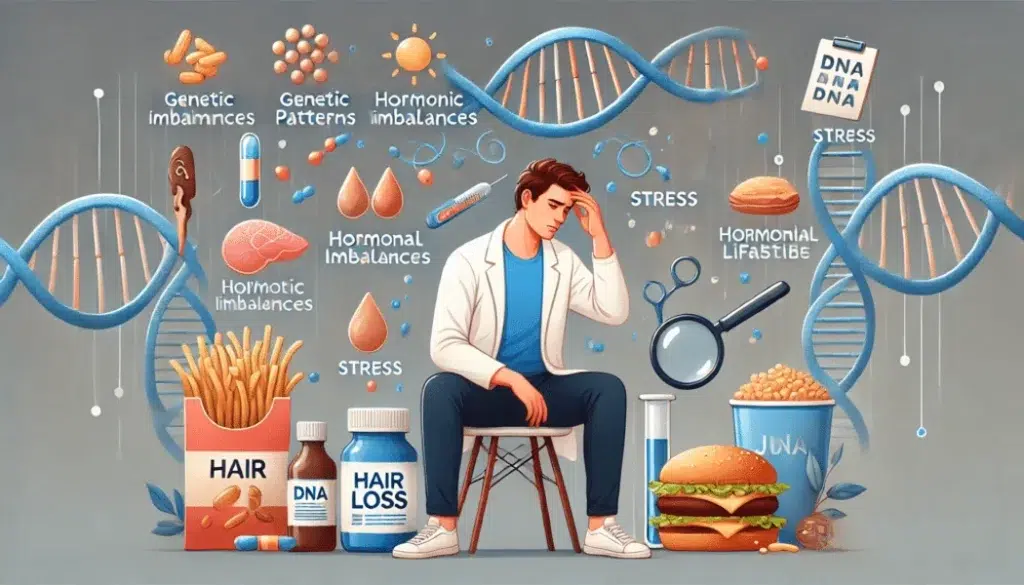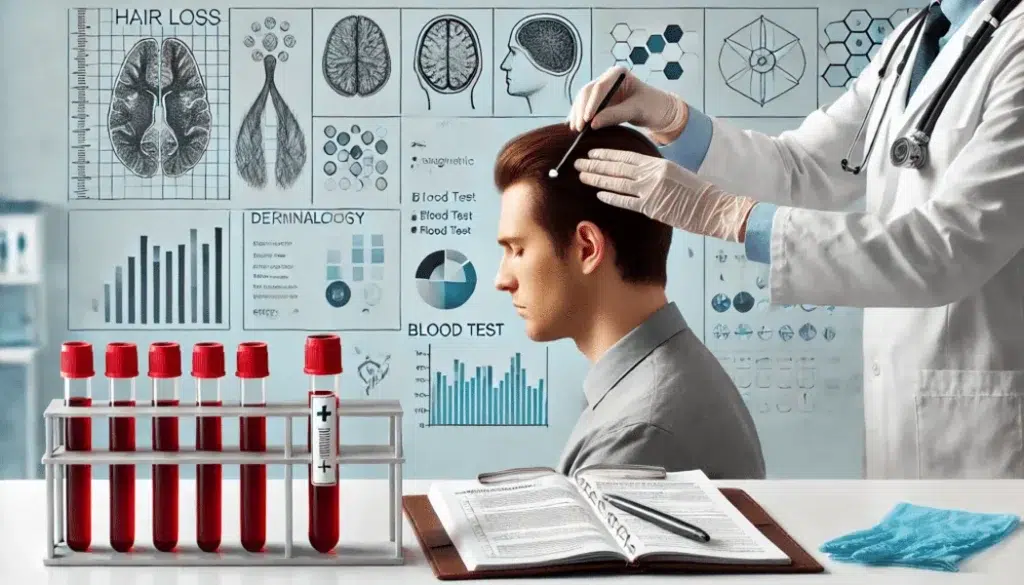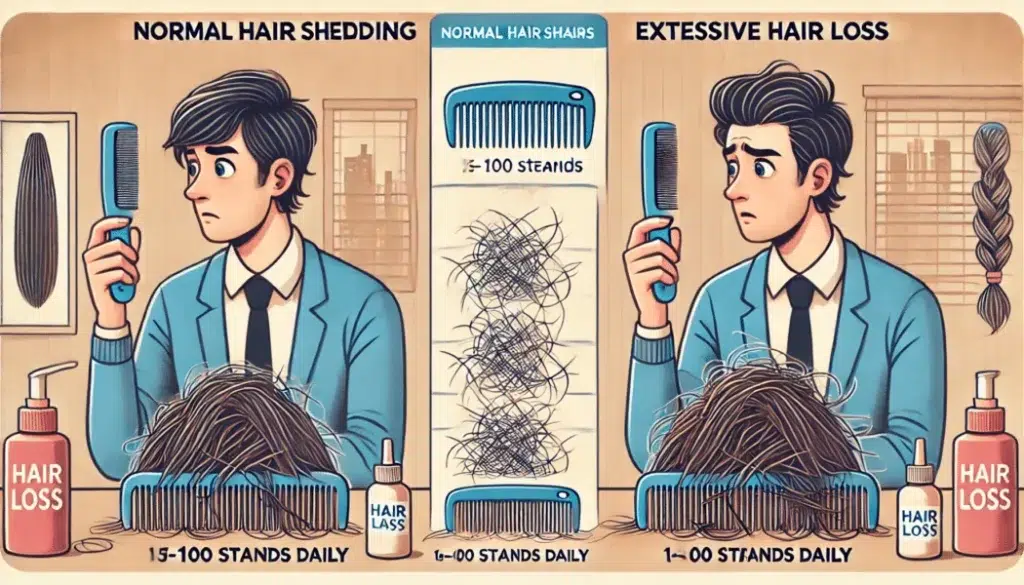🌱 Understanding the Root Causes of Hair Loss
Hair loss is a multifaceted issue that can stem from a variety of factors. Addressing it effectively requires understanding its root causes, which often include a combination of genetics, hormonal imbalances, and lifestyle habits. Genetics is perhaps the most well-known factor. For men, male-pattern baldness, or androgenetic alopecia, is a common condition influenced by hereditary traits. Women can also experience genetic hair loss, often manifesting as thinning at the crown or parting line.
Hormones play an equally significant role. Androgens like DHT (dihydrotestosterone) can shrink hair follicles in genetically predisposed individuals, gradually leading to hair loss. Conditions such as polycystic ovary syndrome (PCOS) and thyroid disorders are also linked to hormonal imbalances that impact hair growth. Hormonal shifts due to pregnancy, menopause, or contraceptive use can exacerbate the problem.

Lifestyle factors are often overlooked but can have a profound impact. Chronic stress is a key contributor, pushing hair follicles into a resting phase prematurely, a condition known as telogen effluvium. Poor nutrition—especially diets lacking iron, protein, and essential vitamins—weakens the hair’s structure and slows its growth. Furthermore, physical habits such as frequent use of heat styling tools, harsh chemical treatments, and wearing tight hairstyles like ponytails or braids can damage hair follicles over time.
The causes of hair loss are complex, but understanding them provides the foundation for effective management. It’s not just about genetics or hormones but also the choices we make daily that affect our hair’s health.
🔬 Investigating the Causes: Diagnostic Approaches
Uncovering the reasons behind hair loss often requires a thorough investigation. While noticing increased hair shedding can be alarming, understanding the “why” starts with a trip to a dermatologist or trichologist. These professionals specialize in scalp and hair health, offering expert evaluations to identify potential causes.
Diagnostic methods often include a scalp examination to check for patterns or visible damage. In some cases, a scalp biopsy is performed, which involves taking a small sample of skin and hair follicles for laboratory analysis. This test can reveal whether hair loss is due to inflammation, scarring, or a medical condition affecting the follicles.

Blood tests are another vital tool in the diagnostic process. They help detect underlying issues like thyroid dysfunction, iron deficiency, or hormonal imbalances. For women, tests may measure levels of androgens to check for PCOS or other hormone-related conditions.
Self-awareness is an important part of this process. Keeping a journal to track recent changes in health, stress levels, or diet can uncover patterns. For instance, did you recently experience a high-stress event, change your eating habits, or start a new medication? Identifying triggers empowers you to take proactive steps to address them.
Timely diagnosis and a comprehensive understanding of the contributing factors can make a significant difference in preventing further hair loss and starting effective treatment.
📉 Everyday Shedding vs. Excessive Hair Loss
It’s normal to lose hair every day, but how do you distinguish between healthy shedding and a potential problem? The average person sheds 50-100 hairs daily, a part of the hair growth cycle known as the Exogen phase. However, excessive shedding—losing 200 or more hairs per day—can be an early warning sign of telogen effluvium or another condition.
Shedding often increases temporarily during seasonal transitions, stress, or illness. For example, many people experience more noticeable hair fall after recovering from high fever illnesses like COVID-19, due to the stress it places on the body. Similarly, postpartum hair loss affects new mothers due to hormonal shifts after childbirth. In most cases, these types of hair loss are temporary and resolve within a few months.

A helpful way to monitor shedding is by paying attention to the number of hairs left on your pillow, shower drain, or comb. Keep track of whether the shedding is consistent or increasing over time. If you notice significant changes, it’s important to consult a professional to rule out more serious causes, such as autoimmune disorders like alopecia areata or fungal infections of the scalp.
Understanding the difference between everyday shedding and excessive hair loss helps you determine when it’s time to seek help. Early intervention can minimize damage and lead to better long-term outcomes.
🛠️ Regaining Control: Effective Solutions and Preventative Measures
Taking charge of hair loss involves a combination of lifestyle adjustments, targeted treatments, and expert guidance. Start with your diet—foods rich in iron, zinc, and vitamins A, C, D, and E are essential for healthy hair. For example, spinach, sweet potatoes, and salmon are excellent sources of these nutrients. Supplements like biotin can also strengthen hair strands and encourage growth, particularly for individuals with deficiencies.
Stress management is equally crucial. Chronic stress can disrupt the hair growth cycle, so activities like yoga, meditation, or even regular walks can make a significant difference. Pair these habits with good sleep hygiene to give your body ample time to repair and regenerate.

For individuals dealing with hormonal hair loss, treatments like minoxidil are proven options. Minoxidil is a topical solution that stimulates hair regrowth by increasing blood flow to the scalp, while finasteride blocks DHT, preventing further follicle shrinkage. Those seeking natural remedies an herbal supplement that may help block DHT without medication.
Beyond medications, scalp care is an often-overlooked aspect of hair health. Regular scalp massages using essential oils like rosemary or peppermint promote circulation and follicle health. Avoid harsh shampoos and opt for products free of sulfates and parabens to protect the scalp’s natural balance.
For advanced cases, professional treatments like low-level laser therapy or hair transplants are viable options. Consulting a specialist ensures you receive a personalized plan tailored to your specific needs. With the right strategies in place, regaining control over hair loss is achievable and empowering.
Stay with us — the best is yet to come.
By following our advice, you’re doing the most you can for your hair.
Be the first to know when we publish new guides, tests, and proven strategies for stronger, healthier hair.
👉 Visit the About Me page to learn more about my journey, mission, and why helping people with hair health is so personal to me.
Want healthier, stronger hair? Discover 8 science-backed habits that protect your scalp and boost natural growth. Get your free PDF guide today!
Disclaimer: This article is for informational purposes only and is not a substitute for professional medical advice. Sensitive claims are supported with scientific references, and full product details can always be found on the official websites of the respective manufacturers or distributors.
Some links in this article are affiliate links. If you choose to make a purchase through them, I may earn a small commission at no extra cost to you — helping me keep HairGrowGenius running. Thank you for your support!

✅ FAQ Section for Post: Understanding Hair Loss: The Key Causes and Solutions
❓ How long does it take to see results from hair loss treatments?
Most treatments, like minoxidil or dietary adjustments, need at least 3–6 months to show visible improvement. Hair grows slowly—around 1 cm per month—so consistent use is key. Patience is essential; quitting early may mask gradual gains.
❓ Can stress-related hair loss become permanent?
Typically no—stress-induced shedding (telogen effluvium) is temporary, and hair returns to normal after the stress subsides. However, chronic stress can trigger temporary loss repeatedly. Managing stress through sleep, relaxation, and lifestyle changes helps avoid long-term impact
❓ Do scalp biopsies really help diagnose hair loss causes?
Yes, scalp biopsies provide detailed information about follicle health, inflammation, or scarring that other tests can miss. Trichologists or dermatologists use them when visible clues aren’t enough. It’s a minor procedure—safe, with quick recovery—and can guide precise treatment plans.
🧾 Last updated: June 2025 based on latest research.


Leave a Reply